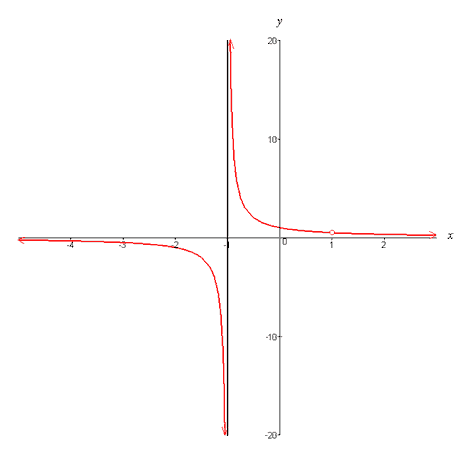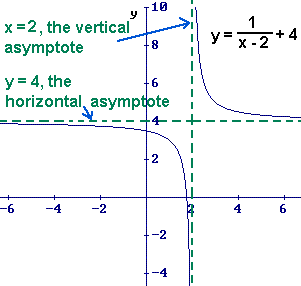




More specifically,
Using the definitions of the intercepts, I will proceed as follows:
x-intercept(s):
y = 0 for the x-intercept(s), so:
25x2 + 4y2 = 9
25x2 + 4(0)2 = 9
25x2 + 0 = 9
x2 =
x = ± ( )
Then the x-intercepts are the points (, 0) and (
, 0)
y-intercept(s):
x = 0 for the y-intercept(s), so:
25x2 + 4y2 = 9
25(0)2 + 4y2 = 9
0 + 4y2 = 9
y2 =
y = ± ( )
Then the y-intercepts are the points (0, ) and (0,
)
Just remember: Whichever intercept you're looking for, the other variable gets set to zero.
 In this same vein, the square root of -36 would be 6i.
In this same vein, the square root of -36 would be 6i.


 Now, this will be true not only for these four exponents, but for any exponent of i. But because there are only four options, you can figure out which applies to your exponents.
Now, this will be true not only for these four exponents, but for any exponent of i. But because there are only four options, you can figure out which applies to your exponents.Section 2.2: Polynomial Functions of Higher Degree
We have learned so far how to graph and recognize polynomial functions with degrees less than 2. The graphs of polynomial functions greater than 2 howeverare more difficult to graph and recognize. But, there are some key characteristics to each higher degree.
One of the important concepts is that polynomial functions are continuous. There are no breaks, holes or gaps in them.They are curvy and not very sharp or straight.
The degree of the number is alsoimportant. The degree, also commonly known, as n is the most x-intercepts it can have, but it can have less. For example, y=x4, could have 4 x-intercepts, but it could also have 3 or even 1.
An Extrema is the relative maximum or relative minimum. It is n-1.
Even vs. Odd degrees:
When the graph has an even degree such as y=x2 they all look very similar:


y=x2 y=x4
Both ends are facing up.
When the graph has an odddegree such as y=x3 they look very similar as well:


y=x3 y=x5
Transformations:
Similar to lesser degree polynomial functions such as y=x2 or even y=x, the transformations are the same.
A negative coefficient flips the graph essentially in the opposite direction:


y=x5 y=-x5
Notice the Flip?
Another example is movement on the y-axis. A positive number still indicates movement up, and a negative number indicates downward movement.


y=x4+1 y=x4-1
However the trick is when it’s in the parenthesis. It is counter-intuitive. When there is a positive, move it to the left. When there is a negative, move it to the right.


y=(x+1)5 y=(x-1)5
The Leading Coefficient Test:
Whether the graph of a polynomial function has upward movement (rises) or downward movement (falls) can be determined by its degree, even or odd, or by its leading coefficient as indicated in this test. This helps define End Behavior.
When n is odd: (like y=xn)
-If the leading coefficient is positive, (an >0), the graph falls to the left and rises to the right.
-If the leading coefficient is negative, (an<0), the graph rises to the left and falls to the right.
When n is even:
-If the leading coefficient is positive (an>0), the graph rises to the left and right.
-If the leading coefficient is negative (an<0), the graph falls to the left and right.